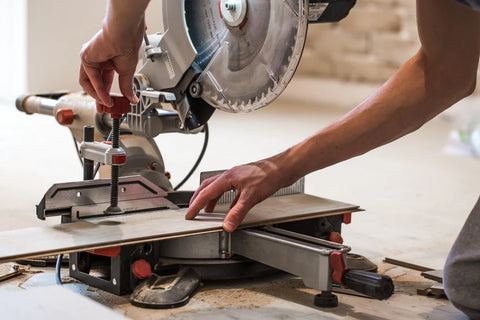If you're new to fiber laser engraver, you may have a lot of questions about how they work and what they can do for your business. We've gathered our top 10 tips for best laser engraver beginners to help you get started.
Tip 1: Understand the basics

Before using a fiber laser engraver, it's essential to have a clear understanding of the basics of laser engraving. This includes knowing the materials that can be engraved, the recommended power and speed settings, and the safety precautions necessary when using a laser engraver.
First, you are going to power up my machine by clicking these three buttons. Monport fiber laser engraver has the red light preview for your laser marking. You can use it to get an idea of where your design is going to be on your little tray.
Let us go over the focal height, I do keep mine marked, you can make a mark is what you use when you are doing flat objects and rotary. To adjust it, you just spin this little tip up.
Step 2: Select the right material

that are typically suitable for best laser engraver engraving include metals, plastics, and some natural materials like wood, stone, and glass. Make sure to check the manufacturer's guidelines for the recommended materials. You can get more material information from our blog: What Materials Can A Fiber Laser Engraver Mark?
Step 3: Adjust the power and speed settings

The power and speed settings of a fiber laser machine can affect the quality of the engraving. Experiment with different settings on sample materials to achieve the desired results. As a beginner, it's recommended to start with a lower power and speed setting and gradually increase them to achieve the best results.
Layers can be useful if you have a lot of different elements on the screen. Most of the fiber designs are basic and one-material type, so you do not really use layers.
You can create your library and download them online, you can also buy these designs from another creator. Different settings impact how your design looks depending on the material.
Step 4: Use proper safety gear

Fiber laser engraver machines emit a powerful beam of light that can be harmful to your eyes, skin, and respiratory system. It's essential to wear proper safety gear, such as safety glasses, gloves, and a respirator, when operating a best laser engraver to protect yourself from the laser and fumes.
Step 5: Keep the work area clean
Debris and dust can interfere with the laser engraving process and affect the quality of the engraving. Clean the work area regularly and ensure the material is free from any dirt or debris before engraving.
Step 6: Properly position the material

The material should be positioned correctly on the engraving bed to ensure accurate and consistent engraving. Use clamps or other fixtures to hold the material securely in place and prevent movement during the engraving process.
You can adjust the red light for accurate location. If your engrave is not lining up with where the right. It is actually at the bottom it is not in any of property panels to adjust the actual light when you are lighting a job which is going to show the outline of your design.
Step 7: Check for maintenance

Regular maintenance is essential to keep your fiber laser engraver running smoothly. Check for signs of wear and tear, clean the lenses and mirrors regularly, and keep the machine well-lubricated to ensure best laser engraver performance.
When it comes to stainless steel depending on your design at least from my experience sometimes when you have small details and you try to do a deep engrave. It can all become fuzzy and it does not look nice. You should try and figure out what works best for you. When the beam get hotter,the marks will be darker. Besides, you can clean these up, you can use paintbrushes and toothbrushes to scrub. In addition, you should check out there are a lot of lines. Lines can be cause by a few things, dirty lens, shift material, or bad hatch settings.
You should examine the lens. You can see there is a little fiber or hair something right there, so you can use alcohol to clean up.
Step 8: Test on sample materials
Before engraving on the final product, it's recommended to test on a sample material to ensure the settings are correct and the engraving is of high quality. Testing on sample materials helps to save time, material, and effort in case of any mistakes.
Step 9: Avoid overheating
Overheating can cause warping or discoloration of the material. Avoid engraving for long periods without breaks, and use a cooling system if necessary. The laser settings should be adjusted according to the material to prevent overheating.
Always wear safety glasses when operating a fiber laser machine because the light is so powerful that it can cause eye damage without proper protection. If you're working in an enclosed space (like a booth), make sure there are no reflective surfaces near where you're working—the reflected light from those surfaces could cause damage as well!
Step 10: Learn from others
Join online forums, attend workshops or seek guidance from experienced fiber laser engraver users to learn tips and tricks to improve your skills and achieve better results. This helps beginners to learn new techniques and get inspired by the work of others who use the best laser engraver.










